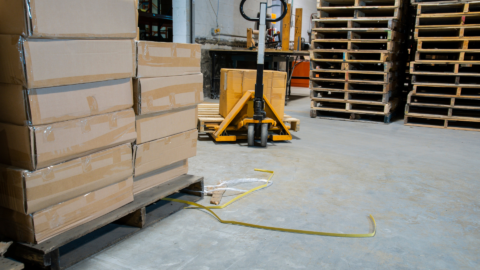Workplace safety is not just a legal requirement; it’s a fundamental aspect of ensuring a healthy and productive work environment. Slips, trips, and falls might sound minor, but they account for a significant number of workplace injuries every year. Not only do these accidents affect the well-being of employees, but they also impact the overall productivity of a business. It’s crucial to understand that many of these incidents are preventable with the right measures in place.
In this article, we delve into practical and effective strategies to minimize these incidents. From environmental adjustments to employee training, we’ll cover all you need to keep your workforce safe and upright. We will explore a variety of techniques and approaches that can be adapted to different workplace settings, whether it’s a busy warehouse or a sleek corporate office.
Understanding the Risks
Slips, trips, and falls are among the most common workplace accidents, often resulting in serious injuries. A slip occurs when there’s too little traction between footwear and the walking surface. Trips happen when a person’s foot collides with an object, causing them to lose balance. Falls can occur from slips and trips or heights.
These incidents are often due to overlooked hazards like wet floors, cluttered work areas, or inadequate lighting. Recognizing these risks is the first step toward prevention. A deeper understanding of these risks also involves acknowledging the various factors that contribute to such accidents, including human error, environmental conditions, and organizational factors like inadequate safety policies or lack of proper training.
Preventative Measures: Environmental Strategies
A tidy workplace is a safer workplace. Regular maintenance, such as promptly cleaning spills and removing debris from walkways, significantly reduces the risk of slips and trips. Good housekeeping is not just about cleanliness; it’s also about organization. Properly storing tools and materials not only keeps them out of the way but also extends their lifespan.
Additionally, proper lighting is essential in all work areas, corridors, and passageways to ensure clear visibility. Well-lit areas help employees identify and avoid potential hazards, thereby reducing the risk of accidents.
Warning signs and barriers should be used to highlight potential hazards, especially in areas prone to wet or slippery surfaces. Clear, visible signage can alert employees to potential dangers, encouraging caution in these areas.

Equipment and Tools to Reduce Incidents
Investing in anti-slip flooring or mats, especially in areas known to be slippery, is a proactive approach to prevent slips. Such flooring materials are designed to provide better grip and stability, thereby significantly reducing the likelihood of slip accidents. Equally important is the use of appropriate footwear tailored to the workplace environment. Footwear with the right kind of soles can make a huge difference – some are designed for wet surfaces, others for oily environments. The correct footwear can provide the necessary traction and support to prevent slips and falls.
Additionally, installing handrails and guardrails in strategic locations like staircases and elevated platforms offers additional safety support. These installations are not just safety features but also aids for employees who need extra support while navigating the workplace.
Employee Training and Awareness
Regular training sessions reinforce the importance of safety and inform employees about new protocols and potential hazards. Such sessions should be interactive and engaging, allowing employees to ask questions and even participate in safety drills.
Creating a culture where safety is a shared responsibility encourages workers to be vigilant and proactive in identifying risks. This involves creating channels through which employees can report potential hazards without fear of reprimand. Encouraging the immediate reporting of hazards ensures quick action and prevention of accidents. Regular safety meetings and open discussions about safety can also help in building a proactive safety culture in the workplace.
Emergency Response and First Aid
Understanding basic first aid for slips, trips, and falls is crucial in mitigating the severity of an injury. Training in how to properly respond to such accidents can make a significant difference in the outcome. Workplaces should have an accessible and well-understood emergency response plan that is regularly updated and communicated to all employees.
Regular training in first aid and emergency procedures empowers employees to act confidently and promptly in the event of an accident. It’s important that such training is comprehensive and includes practical exercises that simulate real-life scenarios, ensuring that employees are well-prepared for any situation.
Conclusion
Preventing slips, trips, and falls in the workplace is an ongoing process that requires commitment from both employers and employees. By implementing the strategies discussed, businesses can create a safer environment, reduce the risk of injuries, and foster a culture of safety and wellbeing. It’s not just about meeting legal obligations; it’s about valuing and protecting your workforce.
Contact WorkSafe to find out how we can help your company today!
Working to keep you safe, healthy, and productive,

